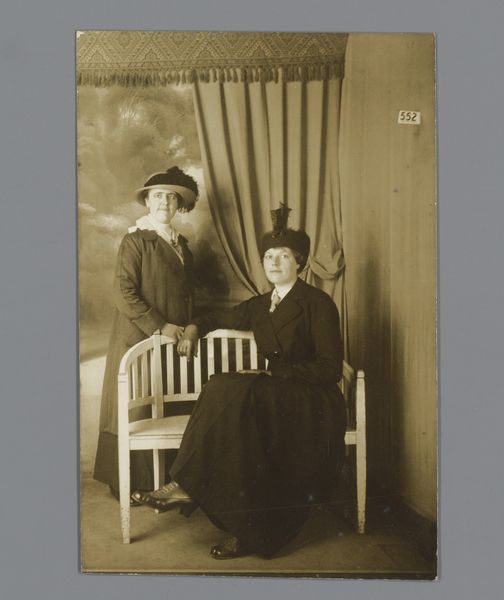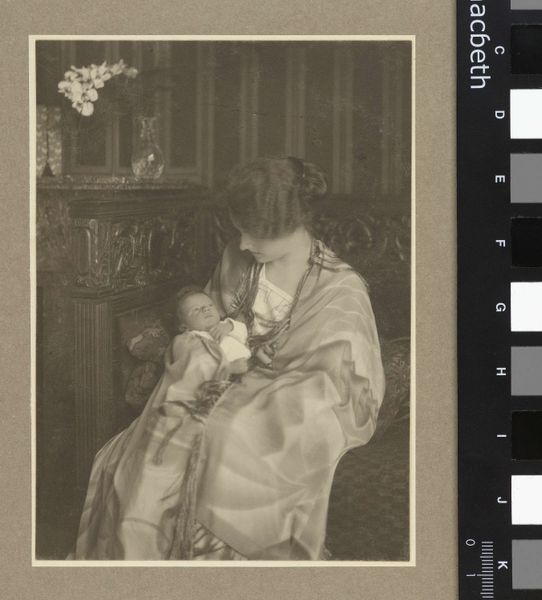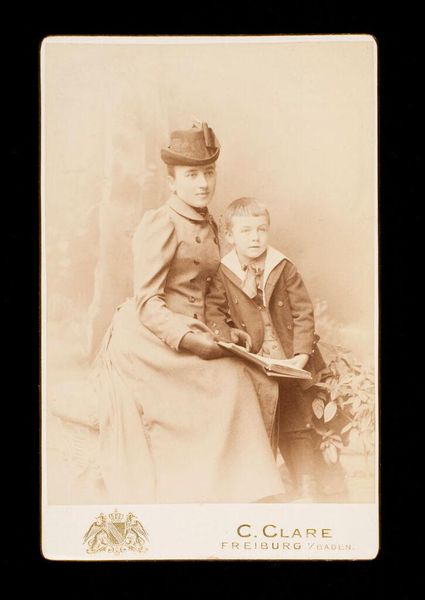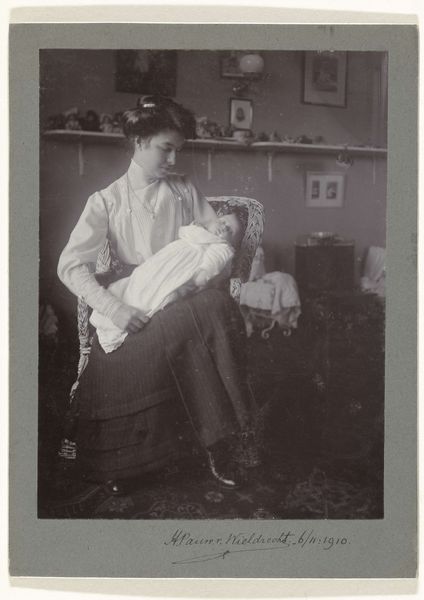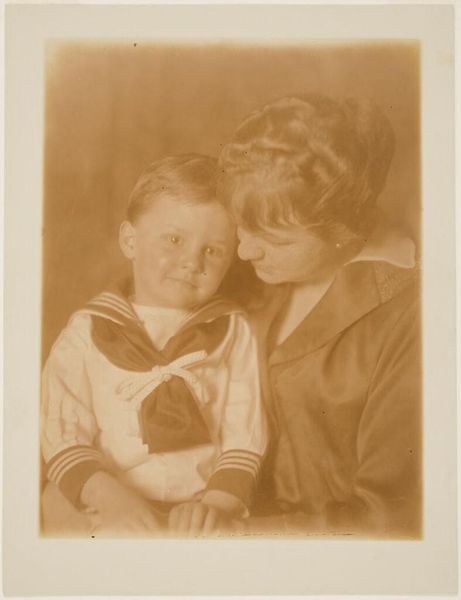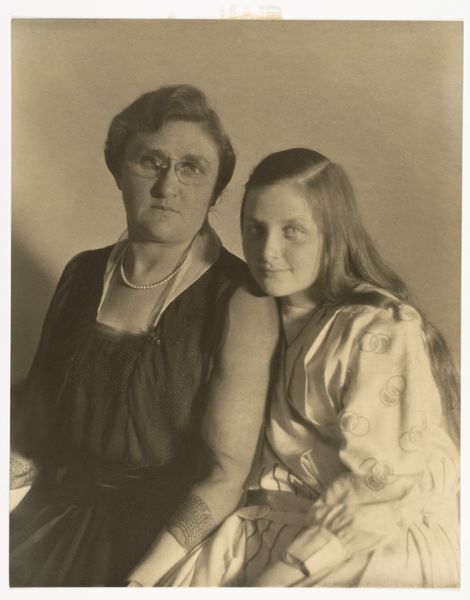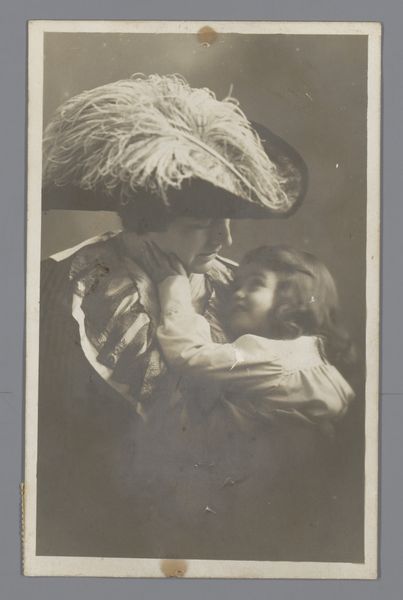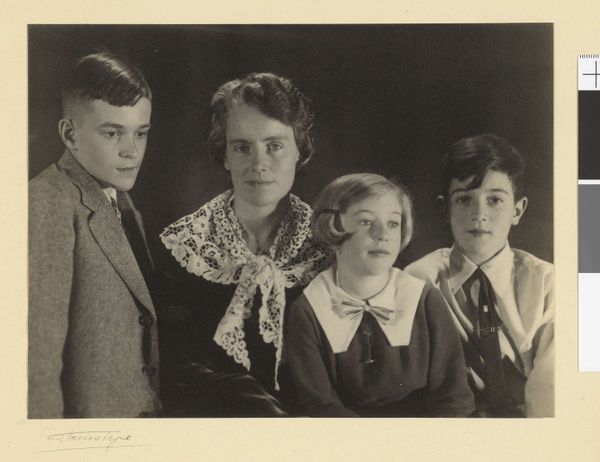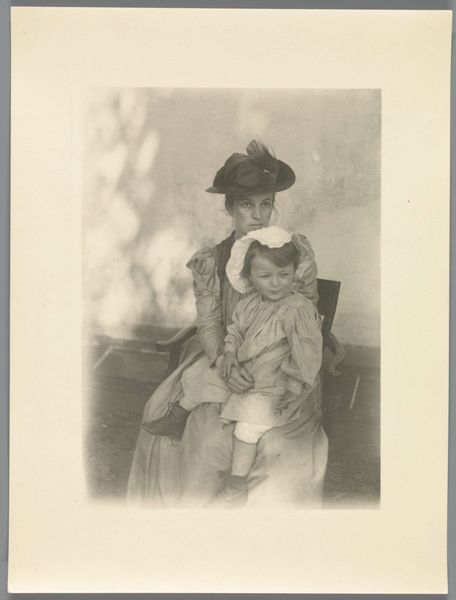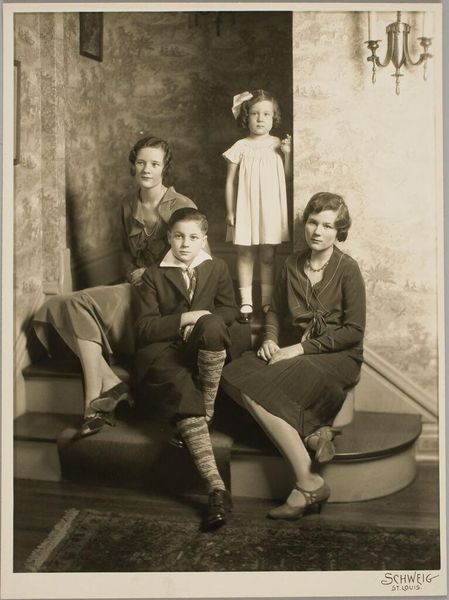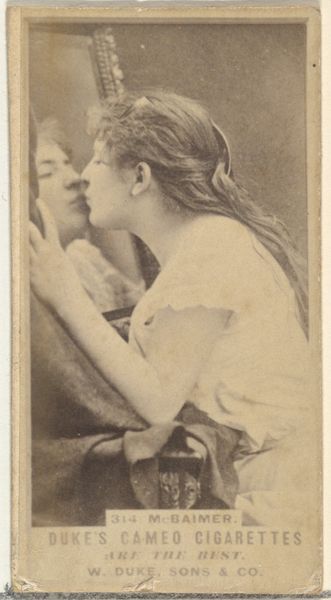
photography, gelatin-silver-print
#
portrait
#
pictorialism
#
photography
#
intimism
#
gelatin-silver-print
#
portrait photography
Copyright: Public Domain
Curator: This is "Jeanne and Richard," a 1912 gelatin-silver print by Morton Schamberg, currently residing in the Metropolitan Museum of Art. Editor: The photograph has a dreamy, soft focus… a tender moment frozen in time. It feels very staged, yet intimate. It's interesting, what is it trying to communicate? Curator: Schamberg was part of a circle exploring modernism in America. This photograph exemplifies pictorialism, which emphasizes the artistic quality of photography, blurring lines with painting through techniques like soft focus. Notice how the subjects almost emerge from a hazy background. Editor: Right, almost like they're being called forward by time! I wonder who they are and why the artist chose them. Jeanne seems wary or shy, almost suspicious. While Richard, dressed smartly in a suit, reads intently. She seems present in a way he isn't. I find her expression haunting. Curator: Well, Schamberg was active during a period where photography was vying for recognition as fine art, moving beyond simple documentation. The aesthetic choices – the sepia tone, the posed yet relaxed composition – speak to this aspiration. It hints at fin-de-siècle anxieties, too, a world rapidly changing seen through the lens of domesticity. Editor: It's that tension that captivates me – the stillness against the disquiet in Jeanne's eyes. The softness almost heightens her piercing gaze. The choice of light and dark pulls all focus toward Jeanne and away from the brother; this isn't about both of them but rather what she's holding. Curator: Absolutely. Schamberg creates an intimate space to suggest broader social shifts reflected within the domestic sphere. Consider the rapid urbanization and industrialization of the era – photography became a tool to explore how these changes shaped personal experiences. Editor: And, you know, beyond the historical context, there’s just the timelessness of siblings in quiet contemplation, sharing the quiet. Something universal about the childhood state when adults weren’t looking at us! Curator: Indeed. I find Schamberg has deftly navigated a complex moment through these subjects: at the end of a long epoch, and the cusp of something different and unsettling. Editor: What remains are questions, emotions simmering just beneath the surface—like that sister with those startling eyes in what appears to be her final silent scream.
Comments
No comments
Be the first to comment and join the conversation on the ultimate creative platform.


